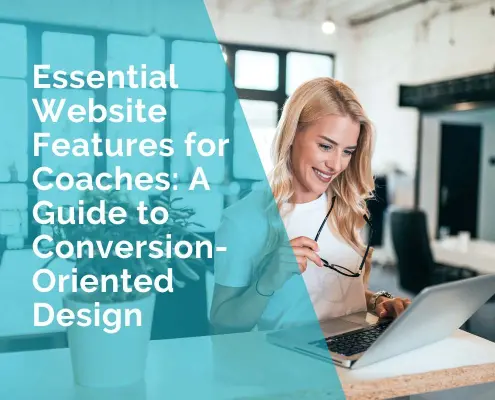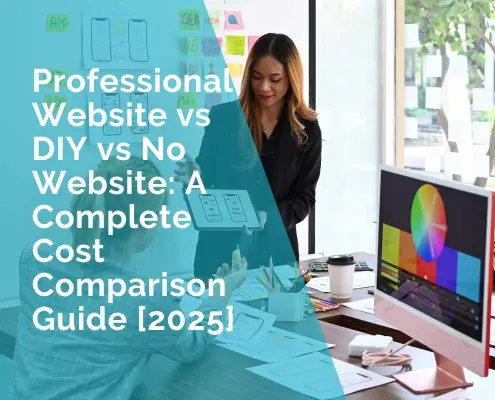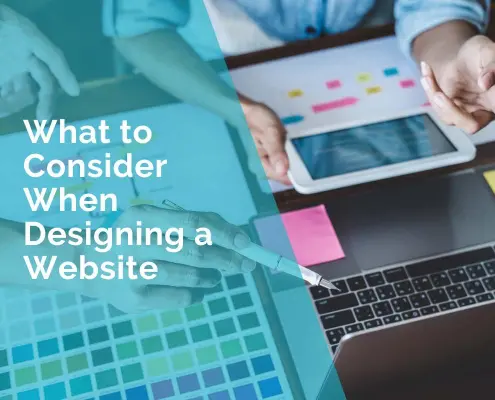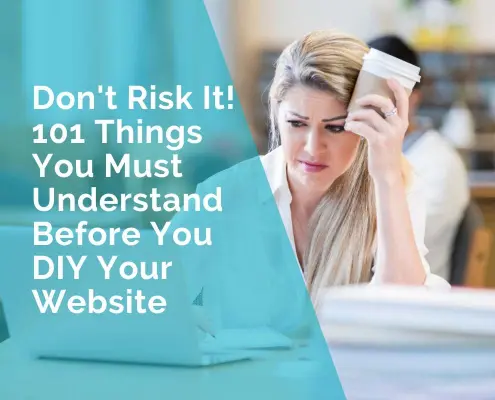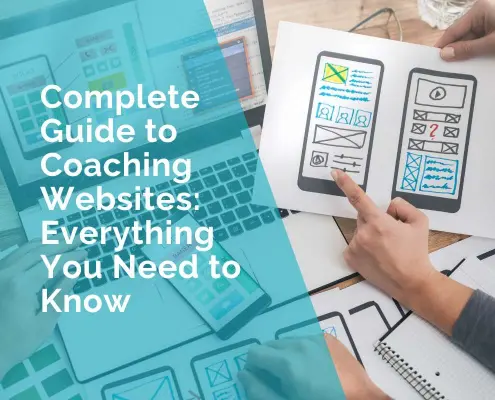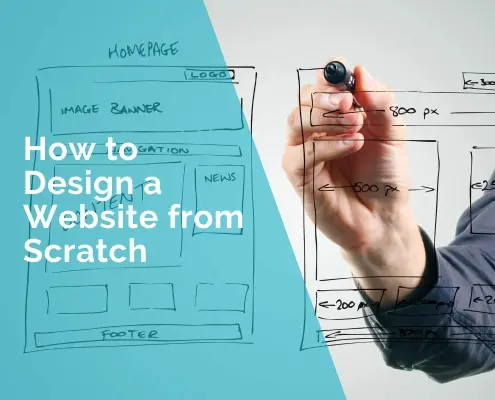How to Build a Real Estate Website From Scratch
Building a real estate website is not about rocket science, yet neither is it about just snapping your fingers and voilà!-there’s my site. It’s kind of like finding that perfect house you had a vision in mind, but between the search, design choices, and making sure everything fits, it gets a little overwhelming. But if you are just a small business owner bogged down with options in this high-tech world, well, let me just say: I’ll be your guide. Every step toward creating a great real estate website, I’m here to guide you through.
Now, we’re not talking about just any website. This will be a home for your business — something that will attract clients, bring in leads, and, most importantly, make your competitors jealous. We’ll go through this process step by step, so grab a coffee, maybe even a snack, and let’s start this digital journey.
Step 1: Know your audience and use the words that they know.
You would not go to an interview for a job without knowing who you’re going to meet, right? It is the same if you are building a website about real estate. Before explaining how to make a real estate website, you have to know who your audience is.
Think about who your ideal prospects are: First-time homebuyers who require a great deal of handholding. Seasoned investors, who have done it all before and will not play around with less than an immediate, reliable listing? Your website has got to speak to these people.
Think about it: is your target demographic more apt to be looking for homes on their phone over lunch breaks or sitting at their desk running through listings as they’re taking the long road in searching for homes? These are details that are important to know because everything from design to features may greatly change based on these facts.
Quick Tip: Creating Buyer Personas
Imagine the following scenario and put yourself in your customers’ shoes: You are sitting across from your dream customer over a table. What’s agitating them? What are they Googling? Develop several buyer personas that will help. These are fake profiles of your ideal customers. Refer to them when you make decisions about the website.
Take “Sarah, the first-time homebuyer,” for example. You may be searching for how-to guides in great detail, budget tools, and a way to find information easily. On the other hand, what “Bob, the seasoned real estate investor,” may need is detailed property information, market trends, and immediate access to new listings.
Step 2: Get Your Online Address (Before Someone Else Does
Okay, now that we’ve nailed down who’s visiting your site, let’s talk about where it lives. Your domain name is like your website’s street address — it’s what people will remember when they think of you. Keep it simple, easy to spell, and directly related to real estate web development or your specific niche.
Once you have picked a domain name and checked for availability via sites such as GoDaddy or Namecheap, you will have to choose a hosting service. The best way I could explain hosting is it is like choosing where you are going to live. You want something reliable, with hopefully good neighbors, such as being a good reviewer and fast net, because there is nothing worse than a site taking its sweet time loading.
Pro Tip: Speed Counts
More than half of visitors will just leave if your site takes over 3 seconds to load. Yep. That’s the digital equivalent of being late on a first date. You’ve still got a shot, but you’re off to a pretty crappy start. Compare full-service options for finding a fast, safe, and well-supported host, including Bluehost, SiteGround, and Kinsta.
Step 3: WordPress or Custom Code?
Some might get a bit technical, but bear with me; it is never as complicated as it sounds. In terms of actually building up a real estate website, there are basically two cores: using a content management system such as WordPress or going full-on custom with a developer.
Just think of it this way: WordPress was some form of “furnished apartment.” It was ready for immediate use, easy to get around in, and had tons of available plugins, like Estatik or Real Estate Pro, allowing you to add all the features one wants, such as property listings, virtual tours, and everything. Also, it’s affordable, and you don’t have to know about coding.
But on the other hand, a bespoke site would be like building your perfect dream home right from scratch. You would have full control of absolutely everything, from design to functionality, but it would cost more, and you really need a developer to help you execute that dream.
Fun fact: over 43% of all websites use WordPress.
That’s right-WordPress isn’t just for bloggers. For good reason, WordPress is one of the most popular website platforms on the Internet. It’s very versatile and relatively easy to use, and even the most extreme technophobe can use it with a bit of practice.
If you are a small business owner and have just begun to take an interest in real estate website development, then WordPress would most probably be the best option for you. Having a big budget with a special idea, you can use custom development, which will help you grow and adapt.
Step 4: Design is crucial because first impressions count.
Think about the design of your website as the outside of the house; it is the very first thing people will notice, and it’s going to make them feel differently about you. And if it looks old and messy, or worse, takes ages to load, visitors will hit the back button faster than you can say “next listing.”.
When designing your site, keep it clean, intuitive, and mobile-friendly. A whopping 52% of web traffic comes from mobile devices, so if your site isn’t optimized for mobile, you’re missing out on half your audience. And don’t forget the power of visuals. High-quality property photos, virtual tours, and easy-to-read layouts are a must.
Main Points to Include:
Search Filters: Enabling users to instantly filter properties based on price, location, and features. The user gets to click on a “choose your own adventure” button.
Location in Maps: Showing, through Google Maps or any other tool, the exact location of the properties.
Virtual tours: This is quite familiar to today’s world, where everything has started to be done from home. Buyers love them because they can “walk through” a house while remaining seated on the couch.
Step 5: IDX Integration – The Key to Listings
Your site looks fine, but where are the listings? Well, that is where the magic of an IDX integration comes into play. Don’t be scared of this acronym; all it means is being able to pull in live property listings from an MLS, or Multiple Listing Service, right onto your site.
Think of running a store where the shelves are always stocked with fresh inventory. That’s literally what IDX does for you: the moment new listings hit the MLS, they go live on your site; when properties sell, they disappear. No more manual updating is required, and outdated listings become a relic of the past.
Real Life Scenario: The Annoyed Home Buyer
Just imagine your website is up and running, people are coming in, and yet your property listing has not changed in weeks. People looking to buy see houses that have long since been sold. They get frustrated and just leave your site. Just like that, you potentially lost a buyer. That will be fixed through IDX integration, which keeps listings fresh and current without you having to lift a finger.
Step 6: Get Those Leads – Don’t Let Them Go
You have people coming onto your site, and they’re browsing through listings, so what does that imply? You want some sort of mechanism that may take those browsers and actually convert them into leads. That’s where the lead generation software comes in. Think of it like your “For Sale” signs to move those visitors further down the process.
Now, provide your visitors an easy way to get in contact with you either through an effortless form, newsletter sign-up, or even through live chat. Provide them something of value in return, such as a market report or home buying guide, in exchange for their email address.
Pro Tip: Everybody loves free stuff.
It’s amazing how much can be really helped along by giving something away for free. Give something useful in return for a contact detail, and watch those leads come in flying. Using complementary tools, like HubSpot and Mailchimp, among others, will enable you to stay in touch with your lead while you handle the sale after-follow-through.
Step 7: SEO – Coming up at the Top of Google
Let’s face it — if your website doesn’t show up on Google, it might as well not exist. This is where SEO (Search Engine Optimization) comes in. Think of it like setting up your storefront on the busiest street in town. The better your SEO, the more foot traffic you’ll get.
SEO Basics:
Keywords: Place stock keywords in relevant phrases, including “how to build a real estate website,” “real estate web development,” etc., into your website, but do not stuff because Google is smart enough to find it out.
Local SEO: If your business operates in a local context, repeatedly mention your location. The reason is quite simple: Google goes crazy for local searches.
Mobile-Friendliness: Google grants better ranking to mobile-friendly results; therefore, your website should look great on each type of smartphone and tablet.
Step 8: Safety First
A real estate website is not “set it and forget it.” Much the same as keeping up a house, so too will your website need to have maintenance performed on it. Most real estate sites contain highly private data such as client contact information; security should be in high regard.
Install an SSL certificate to protect your site from hackers; often, back up your data so that there will be no disasters. When on WordPress, ensure that plugins and themes are updated regularly to avoid being vulnerable to security issues.
Final words: Show more
Think of your website as your shop online, or rather, say, a showcase for what constitutes your business. The more your business grows, so does your website. Refresh your content from time to time, renew your SEO, and check your analytics to see what works and what doesn’t.
After all, a real estate website is about creating a place that should be friendly, comfortable, and instructive for your guests. This is a great opportunity to impress one, get leads, and stand out from the crowd. And once it finally works, it actually is one of the major box tools in your marketing kit. Just take your time, do what it says on the label, and, voilà, you will have a great-looking website that really does work hard for your business.
***
Nicolett Fakhrutdinova



